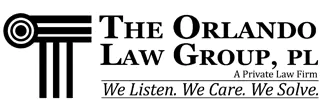It’s no secret that bills are getting more and more expensive. Insurance, electricity, groceries, and more keep climbing with little end in sight.
With such an increase in costs of living, mortgage foreclosures are once again on the rise as people simply can not keep up with inflation.
A recent report by Attom Data showed Florida, and particularly Central Florida, is leading the country in mortgage foreclosures. In fact, one out of roughly every 1,800 homes in the state has filed for foreclosure, with Osceola County having the highest rate in the state.
To give that perspective, that is more than double the rate of foreclosures in Georgia and triple the foreclosure rate in Alabama. In fact, the filing rate in Florida was 71 percent higher in October 2025 than in October 2024.
Falling behind on a mortgage can be one of the most stressful experiences anyone can face. It’s not just the financial pressure; it’s the anxiety that comes with wondering about losing a home, a family’s safe space, the place where they have built their life.
Many people in this situation assume foreclosure is inevitable, but that is rarely true.
One possible solution is a process called loss mitigation, and it exists to help homeowners navigate these challenges and seek a better resolution than losing their home.
The attorneys at The Orlando Law Group specialize in real estate law and helping people in Orlando, Sanford, Winter Garden and Kissimmee with their financial issues, including coordinating with your lender on a loss mitigation plan.
What is Loss Mitigation?
Loss mitigation isn’t a favor or a special exception from a lender. It is a legally protected process designed to give homeowners a fair chance to address difficulties before things spiral out of control.
When a homeowner submits a loss-mitigation application, the law requires the lender to review the homeowner’s situation and consider alternatives to foreclosure.
Perhaps the biggest advantage is that, during this review, the lender cannot proceed with foreclosure. This pause can make all the difference for a homeowner, giving them time to get their finances in order.
During that pause, an attorney and the lender will work together to find mutually beneficial solutions. The purpose of loss mitigation is to create solutions that work for both the homeowner and the lender.
Lenders know foreclosure is costly, time-consuming and often the last choice. Loss mitigation requires them to seriously explore ways to make a mortgage manageable.
Document Everything During The Loss Mitigation Process
When fighting a mortgage foreclosure, one of the most valuable arguments is finding a technical error by a lender.
For instance, many homeowners discover during the process that their payments were applied incorrectly, fees were added by mistake or escrow calculations don’t match their records.
One of the most valuable aspects of loss mitigation is the paper trail it creates. Every document, every communication and every decision is recorded. This documentation is not just administrative; it is protection.
Identifying these issues early can prevent escalation and, in some cases, stop foreclosure before it begins. Even small errors, once documented and addressed, can give a homeowner significant leverage with their lender.
What are the loss mitigation outcomes?
The loss mitigation process could result in many different outcomes, largely dependent on the homeowner’s unique circumstances.
It could mean adjusting a loan to lower monthly payments, creating a repayment plan to address missed payments over time, or temporarily reducing or pausing payments during a hardship.
After all, life circumstances change.
The original loan terms might no longer be manageable, but through loss mitigation, they can be adjusted.
If staying in a home isn’t possible, loss mitigation can still protect a homeowner’s financial future. Options such as a short sale or a deed-in-lieu of foreclosure allow a homeowner to leave the home without the long-term damage a foreclosure judgment can cause.
These alternatives make it easier to rent, buy again or maintain access to credit in the future.
Why do I need an attorney?
From the lender’s standpoint, the loss mitigation process is free for homeowners. However, they are experts in finding the best solution for their company, not necessarily for the homeowner.
That’s where an attorney comes in.
The attorneys at The Orlando Law Group can help prepare the application, communicate effectively with the lender, and ensure that the homeowner’s rights are fully protected.
Again, the smallest errors can cause significant issues. With the guidance of an attorney, someone who knows all the laws dealing with mortgages and loss mitigation, a homeowner can navigate the paperwork, meet deadlines and respond to requests from lenders with confidence.
Timing is crucial.
The earlier a homeowner engages with loss mitigation, the more options the homeowner will have, and the stronger the homeowner’s legal protections become.
Waiting until foreclosure proceedings have begun is too late, as it can limit what’s available, reduce leverage, and increase stress. Acting early, however, allows a homeowner to explore solutions in a structured way, create a clear record, and demonstrate their commitment to resolving the situation.
Loss mitigation is not just about avoiding foreclosure; it’s about regaining a sense of stability, clarity and control during an incredibly challenging time. Mortgage default can affect every aspect of life, from emotional well-being to the ability to focus on work or care for a family.
Plus, the structure and protections offered by loss mitigation provide a way to address the situation proactively, rather than reacting to each new notice or letter with fear.
If you are behind on your mortgage or anticipate difficulties in making future payments, it is important to act now.
The attorneys at The Orlando Law Group help with all types of legal issues in real estate in Orlando, Waterford Lakes, Altamonte Springs, Winter Garden, Lake Nona, St. Cloud, Kissimmee, and throughout Central Florida.
If you have questions about anything discussed in this article or other legal matters, give our office a call at 407-512-4394 or fill out our online contact form to schedule a consultation to discuss your case. We have an office conveniently located at 12301 Lake Underhill Rd, Suite 213, Orlando, FL 32828, as well as offices in Seminole, Osceola and West Orange counties to assist you.

































